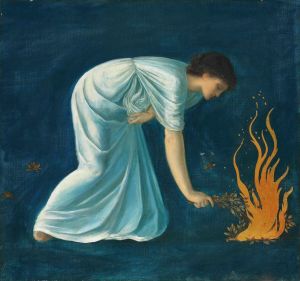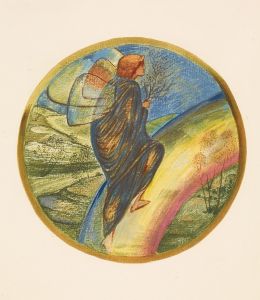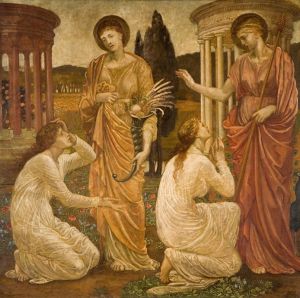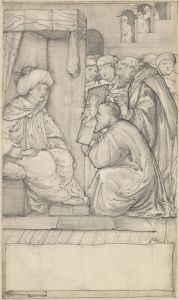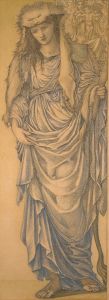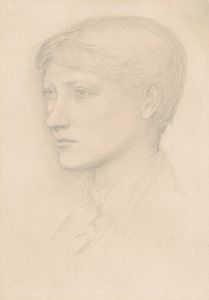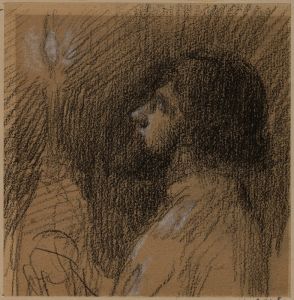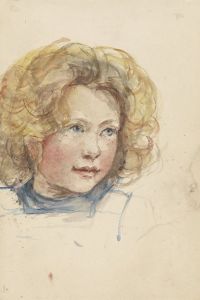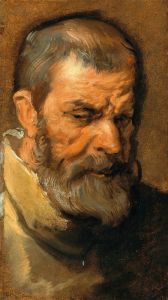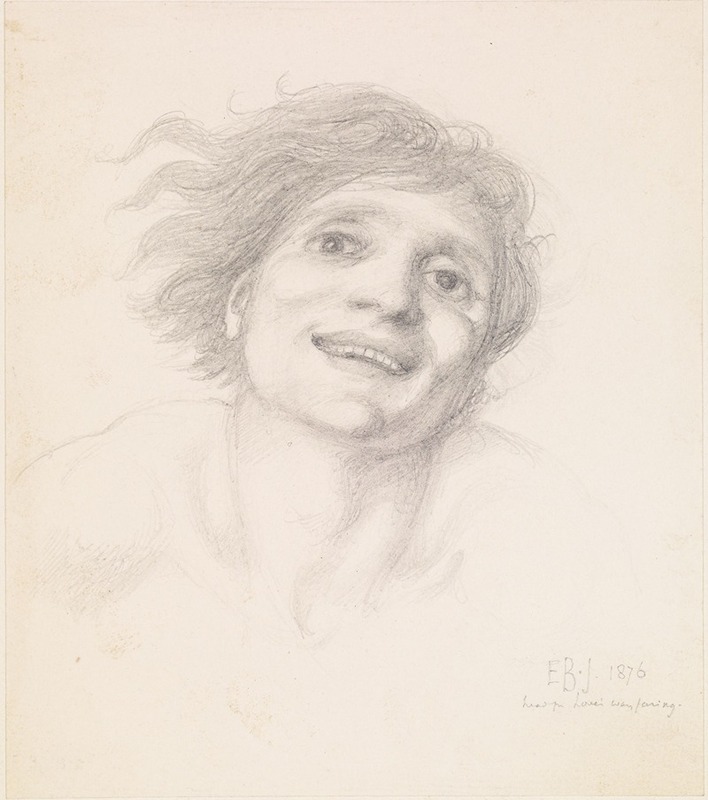
The Car of Love or Love’s Wayfaring – Study of a Man’s Head
A hand-painted replica of Sir Edward Coley Burne-Jones’s masterpiece The Car of Love or Love’s Wayfaring – Study of a Man’s Head, meticulously crafted by professional artists to capture the true essence of the original. Each piece is created with museum-quality canvas and rare mineral pigments, carefully painted by experienced artists with delicate brushstrokes and rich, layered colors to perfectly recreate the texture of the original artwork. Unlike machine-printed reproductions, this hand-painted version brings the painting to life, infused with the artist’s emotions and skill in every stroke. Whether for personal collection or home decoration, it instantly elevates the artistic atmosphere of any space.
Sir Edward Coley Burne-Jones was a prominent British artist and designer closely associated with the later phase of the Pre-Raphaelite movement. His works are known for their romantic and mythical themes, often drawing inspiration from literature, mythology, and medieval art. Among his numerous works, "The Car of Love or Love’s Wayfaring – Study of a Man’s Head" is one of the pieces that reflect his distinctive style and thematic interests.
"The Car of Love or Love’s Wayfaring" is not a standalone painting but rather a study, which suggests it was part of Burne-Jones's preparatory work for a larger composition. The study focuses on a man's head, capturing intricate details and expressions that are characteristic of Burne-Jones's attention to human emotion and form. This piece exemplifies his skill in rendering the human face with a sense of depth and introspection, a hallmark of his portrait studies.
Burne-Jones often explored themes of love and chivalry, drawing from medieval and classical sources. His works frequently depicted allegorical and narrative scenes, where love was a central motif. The title "The Car of Love or Love’s Wayfaring" suggests a journey or quest, a common theme in Burne-Jones's oeuvre, where love is portrayed as a guiding force or a transformative journey.
The study of the man's head in this work likely served as a foundational element for a larger, more complex composition. Burne-Jones's process often involved creating numerous sketches and studies to refine his ideas and compositions before executing the final piece. This meticulous approach allowed him to explore various expressions and poses, ensuring that the final work conveyed the intended emotional and narrative depth.
Burne-Jones's art was deeply influenced by his collaboration with other members of the Pre-Raphaelite Brotherhood, as well as his friendship with William Morris, a key figure in the Arts and Crafts Movement. Together, they sought to revive the craftsmanship and aesthetic values of the medieval period, which is evident in the detailed and decorative qualities of Burne-Jones's work.
The study reflects Burne-Jones's interest in the human psyche and the complexities of emotion, which he often explored through mythological and allegorical subjects. His ability to convey subtle emotions and psychological depth through facial expressions and body language is evident in this work, as in many of his other studies and finished paintings.
While specific details about the larger composition for which this study was intended may not be well-documented, the piece stands as a testament to Burne-Jones's artistic process and his enduring fascination with the themes of love and human experience. His works continue to be celebrated for their beauty, emotional resonance, and the intricate interplay of narrative and form.
In summary, "The Car of Love or Love’s Wayfaring – Study of a Man’s Head" by Sir Edward Coley Burne-Jones is a compelling example of the artist's preparatory work, reflecting his thematic interests and meticulous approach to capturing human emotion and narrative depth.





